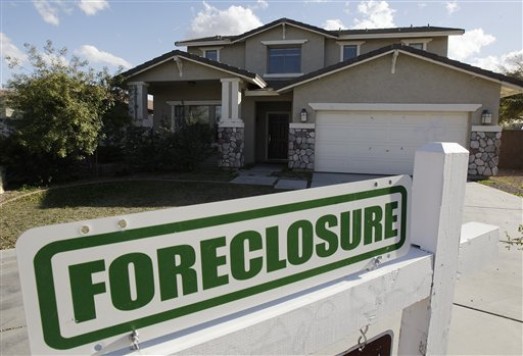Foreclosure Avoidance
Foreclosure is one of the most devastating challenges that families can face, and more often than not, it is preventable. Foreclosure is a legal process in which the lender attempts to recover the difference owed on a property, after the owner has stopped making payments. Formally, a mortgage lender, or other lien holder, obtains a termination of a mortgage borrower equitable right of redemption, either by court order or operation of law. Essentially, it’s a termination of all rights of the homeowner. The foreclosure process begins when the homeowner stops making payments – but it’s not the only option, especially in this tough financial market. Consider other options, such as:
Reinstatement
A reinstatement is the simplest solution for a foreclosure, however it is often the most difficult. Reinstatement means that the homeowner requests the total amount owed on the mortgage to date, and pays it. This solution does not require the lender’s approval and will ‘reinstate’ a mortgage up to the day before the final foreclosure sale.
Forbearance or Repayment Plan
A forbearance or repayment plan involves the homeowner negotiating with the mortgage company to allow them to repay back payments over a period of time. The mortgage lender will, in turn, agree to not exercise their legal right to foreclose on the property, provided that the homeowner makes the payments on the home in a given period of time. The homeowner typically makes their current mortgage payment in addition to an agreed upon portion of the back payments they owe.
Mortgage Modification
A mortgage modification involves the reduction of one of the following:
- The interest rate on the loan
- The principal balance of the loan
- The terms of the loan
- Or any combination of these.
These typically result in a lower payment to the homeowner, and can offer a more affordable loan terms. Options for mortgage modification are available at the government website, Making Home Affordable.
Rent the Property
A homeowner who has a mortgage payment low enough that market rent will allow it to be paid, can convert their property to a rental and use the rental income to pay the mortgage. Renting the property allows the homeowner to focus on other debts while tenants cover the mortgage on the home.
Deed-in-Lieu of Foreclosure
Sometimes called the “friendly foreclosure” a deed-in-lieu allows the homeowner to return the property to the lender rather than go through the foreclosure process.
Bankruptcy
Bankruptcy isn’t a foreclosure solution, though some states market it as such. Ultimately, if the homeowner has non-mortgage debts that are causing a problem in terms of paying the mortgage payments, personal bankruptcy can sometimes be a viable solution. However, there can be additional problems attached to filing bankruptcy, so be sure to do careful research in your state.
Refinance
If a homeowner has sufficient equity in their property and their credit is still in good standing, they may be able to refinance their mortgage. Refinancing can lower your interest rate, monthly payment, length and terms of your mortgage.
Sell the Property
Homeowners with sufficient equity can list their property with a qualified agent that understands the foreclosure process in their area.
Short Sale
If a homeowner owes more on their property than it is currently worth, then they can hire a qualified real estate agent to market and sell their property through the negotiation of a short sale with their lender. This requires that the homeowner shows proof of financial hardship. Acceptable hardships include but are not limited to: mortgage payment increases, job loss, divorce, personal debt, relocation, and more.
Understanding the differences, and your options, can mean all the difference in the world.


I really enjoyed reading this. You pointed out a lot of options that I’d never even heard of before.
[…] as we covered in our article on Foreclosure Avoidance essentially means that the owner of the home has stopped making payments, and is relinquishing all […]